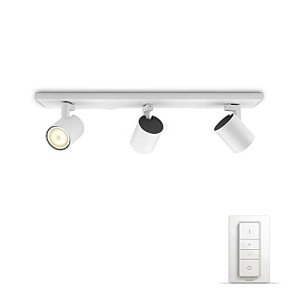10 Things Everybody Has To Say About Interior Lighting UK Interior Lighting UK
Interior Lighting in the UK: A Comprehensive Guide
Interior lighting plays an important role in producing an atmosphere, enhancing functionality, and revealing personal design within homes and businesses. In the UK, where the weather condition can be unpredictable, effective lighting is not only about aesthetic appeals but also about making areas feel warm, welcoming, and practical. This short article looks into numerous elements of interior lighting, including types, patterns, tips, and often asked questions.
Understanding the Importance of Interior Lighting
Lighting is typically thought about the backbone of interior design. It influences state of mind, functionality, and the perceived size of areas. The best lighting can:
- Enhance the architectural functions of a room.
- Highlight artwork and decoration.
- Enhance safety and security.
- Influence efficiency in work spaces.
- Produce a comfy ambiance for relaxation.
Types of Interior Lighting
Efficient lighting style usually integrates three main types of lighting: ambient, task, and accent.
1. Ambient Lighting
This is the main source of light in a room, offering general lighting. Common sources consist of:
- Ceiling-mounted fixtures
- Chandeliers
- Recessed lighting
- Soft wall sconces
Ambient lighting develops a structure from which other lighting types can develop upon.
2. Job Lighting
Task lighting focuses on specific locations to help with activities such as reading, cooking, or working. This type of lighting helps to reduce eye strain and can significantly impact performance. Typical sources include:
- Desk lamps
- Under-cabinet lights in cooking areas
- Reading lamps next to beds
- Track lighting focused on work surfaces
3. Accent Lighting
Accent lighting includes drama and highlights specific items or locations, such as art work or architectural features. This type of lighting can create visual interest and depth in a space. Sources include:
- Picture lights
- Decorative lamps
- Uplighters
- LED strip lights along racks
Utilizing a combination of these lighting types can lead to a healthy and multifunctional area.
Popular Lighting Trends in the UK
The interior lighting landscape in the UK continues to evolve, influenced by design patterns, technology, and consumer preferences. Here are some popular trends to enjoy:
Smart Lighting: The advent of smart innovation has actually transformed how individuals manage lighting in their homes. Smart bulbs and systems like Philips Hue enable users to manage brightness and color temperature level via their smart devices.
Minimalist Designs: Sleek, easy designs that blend effortlessly with interiors are dominating the market. Pendant lights with delicate frames, LED strips, and geometric shapes are particularly stylish.
Industrial Lighting: This trend showcases raw, bare products. Metal fixtures and Edison bulbs use a vintage touch that is both elegant and practical.
Eco-Friendly Options: With increasing awareness of sustainability, many consumers are turning to energy-efficient LED alternatives and fixtures made from sustainable materials.
Tips for Effective Interior Lighting Design
Creating an efficient lighting strategy needs thoughtful factor to consider of various aspects. Here are some ideas:
Consider the Purpose of Each Room: Every area has a various function. Consider what activities will occur and what kind of lighting will support those activities.
Layer Lighting: Employ multiple kinds of lighting within a room to create depth and flexibility. Integrate ambient, job, and accent lighting to improve both visual appeals and functionality.
Usage Dimmers: Dimmers permit control over brightness levels, allowing users to change lighting according to mood and time of day.
Include Natural Light: Make the many of natural light sources like windows. Usage light, reflective colors for walls and home furnishings to take full advantage of brightness.
Consider Color Temperature: Different color temperatures (measured in Kelvins) develop various atmospheres. Warmer temperatures (around 2700K-3000K) are comfortable, while cooler temperatures (4000K+) lend a more scientific or energetic feel.
Interior Lighting Mistakes to Avoid
To develop a well-lit space, it's important to prevent common lighting risks. Here are some errors to view for:
Underestimating Wattage: Insufficient wattage can lead to dim, unwelcoming spaces.
Neglecting Scale: Fixtures that are too little for a room can keep an eye out of location, while large fixtures can overwhelm an area.
Over-reliance on Ceiling Lights: Relying entirely on overhead lighting can develop uninviting shadows; balance with additional lighting types.
Poor Placement: Misplaced lights can produce locations that are too brilliant or too dark. Strategy positionings thoughtfully.
Frequently asked question Section
1. What is the distinction in between warm white and cool white light?
Warm white light (2700K to 3000K) develops a relaxing, welcoming environment, ideal for living spaces and bedrooms, while cool white light (4000K to 5000K) is more matched for workspaces as it enhances concentration and clearness.
2. How can I maximize natural light in my home?
To take full advantage of natural light, use light-colored walls, tactically place mirrors to show light, and go with sheer window coverings that allow sunshine to pass through.
3. How do I select the ideal lighting fixture?
Think about the size of your area, the style of your design, and the function of the area. Make sure the scale of fixtures matches the room and matches the general visual.
4. Are LED lights much better than traditional bulbs?
Yes, LED lights are more energy-efficient, have a longer life expectancy, and can supply a series of color temperature levels, making them a more sustainable lighting choice.
5. What should I do if particular locations of my room stay too dark?
Consider adding extra job or accent lighting to lighten up those locations. Affordable Lighting UK , wall sconces, and even strategically placed table lamps can help ease dark spots.
Interior lighting is an essential aspect of home and business style across the UK. Comprehending the various types, current patterns, and best practices can help homeowner in creating areas that are not just elegant however also practical. With thoughtful factor to consider and preparation, effective lighting can change any environment, improving both ambiance and functionality for many years to come.
